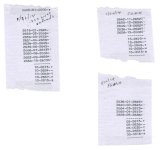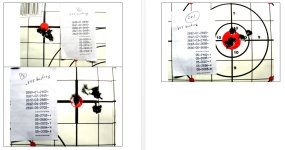4runnerman said: I see what you are pursuing for sure ,but I don't think it matters to much. If you are carefully doing your hands loads you MV should not change more than 10 FPS between shots any how.
You are right on the money. My reloads have shown an SD as low as 3 and as high as 8. I'm quite pleased with them, considering that most writers consider a SD of 10 good.
Geo_Erudite that is very good information to have, and I will follow up on it.
My thanks to all who have responded, something new is gained by all of us when we share or experience, knowledge and insight.
Kindest regards to all


